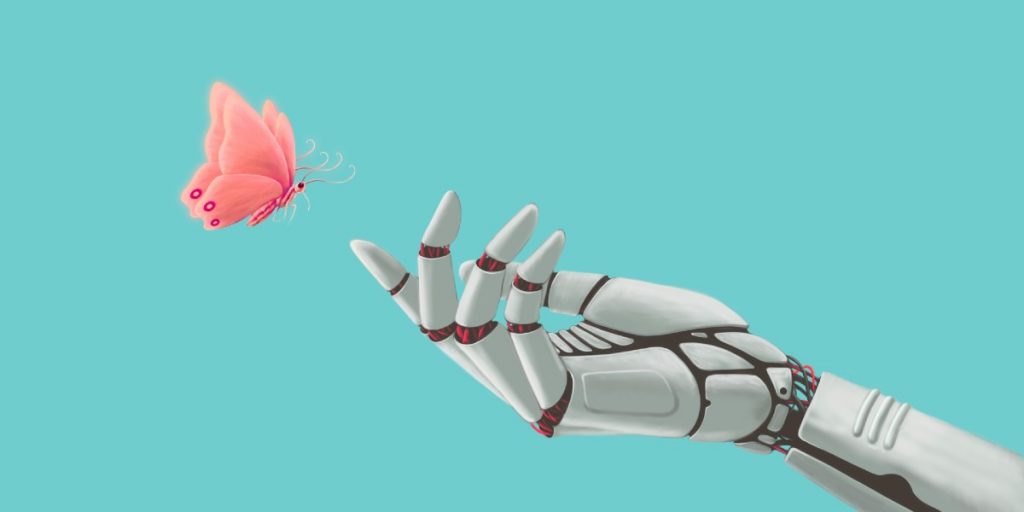
On Sunday, June 12, 2016, Rachel Hurnyak woke in her Bay Area home to horrific overnight news from Orlando, Florida. As bartenders at a popular gay nightclub shouted “Last call,” a man had walked in with multiple firearms. He killed forty-nine people and injured fifty-three others.
Rachel was shocked and as someone who self-identifies as queer, she was terrified. She knew it could have been her—or anyone in her community. Rachel was once my student, and when I heard the news, I had the same thought.
As Rachel thought about going into work the next day at a Bay Area technology company, she knew her stress level was dangerously high. It was not the good kind of stress that makes employees more focused, motivated, and creative. She was grieving. The Grief Index study captures data from more than twenty-five thousand people collected over several decades. The study reports that, at any given moment, approximately one in four American workers is experiencing grief.
Rachel was feeling “hidden grief,” which specialists say emerges from negative events and relationships outside of work, such as family deaths or illnesses or national tragedies. Hidden grief costs U.S. companies as much as $75.1 billion in lost productivity per year due to employees who have difficulty concentrating, make errors in judgment, and experience accidents. Sometimes, the source of the hidden grief, such as the death of a family member, is relatively straightforward and easy to share, but hidden grief can also be more complex and difficult to share with others.
Unable to sleep that night, Rachel decided to make her hidden grief visible to the world. She blogged, “This week and beyond will be difficult for your LGBTQ and/or Muslim colleagues . . . one community grieves because our members were killed in one of the first safe places we ever knew. The second community grieves because they’re being blamed for those killings.”
Much as she loved her job and her colleagues, Rachel was dreading being at work the next morning. It was just going to make things harder. Work colleagues are a critical component of many people’s support systems. In Rachel’s case, most of her straight colleagues were good, well-intentioned people who would seek to comfort her. They might call themselves allies.
I imagined myself as one of those colleagues reaching out to Rachel that Monday morning, filled with sympathy and outrage, overflowing with good intentions. We might mention our donations to The Trevor Project or the Human Rights Campaign. We might fill her in on the minutiae of each breaking news story about the shooter. We might tell her about a gay family member or college friend or former colleague. We might recall Matthew Shepard, or Tyler Clementi, or another victim of a terrible hate crime. Our eyes would well with tears.
Yet, instead of finding comfort in such good intentions, Rachel was filled with dread. This surprised me. She is one of the most appreciative people I know, the type who makes you feel heroic for the smallest of kind acts. Clearly, I was missing something.
“What they are saying is more for them than me,” Rachel says. “You go to a lot of funerals when you’re a pastor’s kid and you hear the same conversations every time. It is almost a competition to see who was the most relevant. ‘Well, I saw Jim on Tuesday at the store and he looked okay.’ Or, ‘I saw him the following morning and he didn’t look okay.’ Meanwhile, Jim’s family is sitting alone in the corner. We make it about ourselves.”
Rachel feared that she would need to set aside her grief to make room for her colleagues’ emotions. Their grief—my grief—would be genuine. Her colleagues and I cared about her well-being and we wanted something as well: We had an urgent desire for her to see our grief. We saw ourselves as the good ones, as believers on the right side of history. We needed her to validate us. At some unconscious level, we craved affirmation that we were good people, and that she knew it.
Claiming an Identity
In speech and action, we express how we see ourselves and how we want to be perceived by others, a process that organizational scholars Caroline Bartel and Jane Dutton call “identity claiming.” Psychologically, identity claiming is an ordinary and universal process. Each of us claim multiple identities. My husband, my children, and I all claim an identity as Indian Americans. My daughters also claim identities as Mets fans and as girls-but-not-girly-girls. My husband claims identities as a physician, a Punjabi Sikh, and a devoted dad. I claim identities as a woman of color, a do-gooder, and a loving mom.
Trending: 5 Reasons Life Gets Better After Your 40s
Each of us has an intense craving for others to see and acknowledge our various identities, a phenomenon that Bartel and Dutton call “identity granting.” They compare the interplay between identity claiming and granting to a public performance and audience reaction. Tina Fey may claim an identity as a funny person, but if audiences don’t find her funny, her identity as a funny person has not been granted.

We are vigilant for clues about whether our identity has been granted. Psychologist William Swann has studied how much we care about this affirmation of ourselves, including one study in which participants were even willing to pay for affirmation. How people treat us and what they say to us affirms us.
When we are unsure of whether an important identity has been granted by others, our craving for affirmation becomes more intense and urgent. Psychologists call this a moment of self-threat—our identity is being challenged or dismissed. Just as moments of physical threat trigger a hyper-focus on self-preservation, moments of psychological self-threat do the same. If I value being seen as a do-gooder, then I feel self-threat when people judge me as a greedy person, based on stereotypes of my résumé. If I value being seen as a loving mom, then I feel self-threat when other mothers judge me for working full-time outside the home. Once I am in self-threat mode, other problems follow.
Organizational scholars Mary Kern, Zhu Zhu, and Sujin Lee and I studied what happens when we construe an external situation as a threat. We asked participants to do a word scramble task and told them we would pay them based on their performance. We also measured whether they saw the task as more of a threat or more of a challenge, which potentially suggests a self-threat. Our prediction was that people who saw the task as a threat would be more likely to morally disengage or turn off their conscience, which keeps us from doing unethical things. As predicted, participants were more likely to morally disengage when they (believed they) faced a threat.
Then we used a simple intervention to bring this threat down. We asked participants to remember a situation in which they felt secure, able to depend on someone and have that person depend on them. Even though this intervention had nothing to do with the threat of the word scramble task, we suspected that it would be affirming and reduce the threat that people felt in the situation. The affirmation made them less likely to morally disengage after the self-threat.
Threat, especially self-threat, is stressful. Threat-motivated stress can lead to bad performance, negative health consequences, and poor behavioral choices. We do not feel good and we usually do not treat others well. We become defensive. Our hopes of being a good person are diminished at times like these.
In summary, we each have identities we claim. We look to others to grant those identities. When we don’t get that affirmation, we feel threatened, which is stressful, and we do things we would not normally do. Under self-threat, we become less the good people we mean to be.
Research reveals how our need for affirmation overrides our genuine desire to be a good colleague, friend, and ally. One study found that we value boosts to our self-esteem, such as compliments, even more than our favorite sex acts and foods. Given that it is socially taboo to openly covet compliments, these study participants probably underreported how much they value that affirmation.
We all fall into this pattern. We fish for affirmation. We center our needs, nudging away the needs of others. We seek what activists call “cookies,” acknowledgments of our good intentions, even when the impact is costly to the cookie giver. We especially crave that affirmation when faced with a situation that challenges the believer identity we are claiming. The affirmation relieves the self-threat, but ironically, we end up acting less like—not more like—the people we mean to be. The pattern is both heartbreaking and exhausting.
Believers were the people most likely to be Rachel’s allies. We were also the people most likely to leave her hanging emotionally. When she needed us most, we were inclined to hit her up for cookies of affirmation.
Chimamanda Ngozi Adichie writes of the dangers of cookies in her novel Americanah. The protagonist leads several diversity workshops until she realizes that the workshop attendees’ primary motivation is not to learn but to feel better about themselves. Craving cookies, they sacrifice the opportunity for meaningful change.
The cookie craving intensifies when self-threat hits, as with the tragic events in Orlando. Many of us want to support Rachel and others who are marginalized. Yet we come up short. We want to do better by Rachel, but we might be unsure about how to do so. We might feel as if we are damned if we say something and damned if we don’t. Many of us believe in the promise of equality and equity, diversity and inclusion, but do not know how to build those beliefs into reality.
We’re going to learn the four ways in which builders are different than believers. Later, Rachel will return toward the end of the book to describe where she found the support she needed. Let’s begin by exploring how good people like you and me think.
The Psychology of Good People
I study the psychology of good people. I see myself as a good person and yet my behavior is filled with evidence to the contrary. I cling to antiquated gender stereotypes. I defend systems that favor well-off, well-connected families like mine. I misidentify people of the same race. I let homophobic jokes slide. I am judgmental of people whose gender identities confuse me. None of this makes me proud.
At the same time, I fight for equality, donate money to social justice causes, spend time supporting individuals from marginalized groups, and challenge the status quo. So my mind flips between a belief that I am as good as they come and a belief that I am no good at all. In the end, the belief that I am a good person always wins.
I am not alone. Most of us need to feel like good people; we have what psychologists Karl Aquino and Americus Reed call a central “moral identity.” Moral identity is a measure of whether I care about being a good person, not whether I am a good person. Their research reveals that most of us want to feel like good people. This is an identity most of us claim and want granted.
“Our bodies are built to fight off bacteria and our minds are built to fight off self-threat. This does not make us bad people, but it does make us unlikely to recognize when we do bad things.”
Now, just because many of us have a highly central moral identity does not mean that we agree on what is and is not moral. In fact, moral identity does not appear to be unique to any particular political affiliation, generation, gender, or belief system. While you and I may disagree on what is and is not moral, we both would bristle at any accusation that we lack morality. Even people who are engaging in crimes or bullying that others view as immoral may still see themselves as moral. A recent Washington Post story offered an in-depth profile of former white nationalist Derek Black, revealing that even KKK affiliates do not necessarily self-identify as racists.
Trending: 5 Simple Strategies for Persuading Anybody
While none of us are good all the time, and some of us are far from good a lot of the time, we still see ourselves as good. How do we sustain this view of ourselves? We hold a faulty assumption that our behavior pivots around our ethical standards and our moral values. That is not how our minds actually work. Our behavior pivots around our identity. I want to see myself as a good person, which I can accomplish by being a good person (doing X) or by convincing myself that I’m a good person (while doing the opposite of X). Even when we fall short, our reflex is to claim an identity as a good person. Evidence to the contrary is a self-threat. It is difficult to overstate just how quickly and seamlessly we deal with self-threats. Our bodies are built to fight off bacteria and our minds are built to fight off self-threat. This does not make us bad people, but it does make us unlikely to recognize when we do bad things. The result is that all of us, even the “good people,” do bad things. It is easy for us to see this in other people and much harder for us to see it in ourselves. Through it all, we cling to an illusion of being a perfectly ethical and unbiased person and to the idea that such a “good person” can exist. This illusion is problematic.
As a result, good people are prone to what my mentors-business school professor Max Bazerman and psychology professor Mahzarin Banaji and I call “bounded ethicality.” Bounded ethicality is the psychology of “good-ish” people. Good-ish people are sometimes good and sometimes not, sometimes intentionally and sometimes not, like all of us. This model of bounded ethicality challenges ways of thinking and talking in which you are either a good person or not, a racist or not, an unethical human or not. We argue that this binary notion is seductive but misleading and scientifically inaccurate. We do not need to fall for this false notion.
Mary Kern and I expanded on the model of bounded ethicality to develop a model of “ethical learning” which takes the psychology of good-ish people into account. We redefine what it means to be a good person as someone who is trying to be better, as opposed to someone who is allowing themselves to believe in the illusion that they are always a good person.
This psychology of good people explains our need to be affirmed by Rachel. We care a lot about our good person identity; we erroneously see this identity as either/or; we want the identity to be granted by Rachel; and we especially need that affirmation under self-threat. This way of thinking is very human and very costly to the people we care about supporting. It is possible to break free of this psychology. We see what that looks like next.
I Didn’t Want to Offend Her
“It was so embarrassing,” recalls author Sarah Weeks. Sarah had no idea how to say her student’s last name: Gita Varadarajan. Sarah was Gita’s instructor at Columbia University’s Teachers College; Gita was an experienced educator enrolled in the Reading and Writing Project, working on her own writing to help her elementary-school students work on theirs. Sarah was thrilled when she had students like Gita who fell outside of the white, American-born norm in her classroom. Still, as a self-described “white girl from the Midwest,” she did not want to insult Gita—a recent immigrant from India—by shredding the pronunciation of her last name.
Sarah understood that knowing and using someone’s name was critical to building meaningful relationships. Dale Carnegie, author of the classic How to Win Friends and Influence People, once said, “A person’s name is to him or her the sweetest and most important sound in any language.” A Google search for “how to remember people’s names” yields almost three million hits. But this was an issue of pronunciation, not memory. So Sarah simply called Gita by her first name and avoided the problem.
After the course ended, Sarah encouraged Gita to expand a story she had written into a book, which they decided to write together. Sarah has published more than fifty-five children’s books, including So B. It and Pie, which has sold more than three million copies. Gita is an experienced teacher and a first-time author with a fresh voice. As collaborators, Sarah often introduced Gita to people in her publishing network. Still, Sarah avoided saying Gita’s last name.
As Sarah and Gita developed the story, they focused on how Gita had written about twelve-year-old Ravi Suryanarayanan, a middle-school boy whose family moves from Bangalore to New Jersey. Ravi was frustrated that none of the teachers and students in his new school had tried to say his name. Sarah had privately winced when she read Gita’s draft, seeing herself in the fictional teachers. Sarah asked Gita about the characters’ motivations, specifically why no one tried to learn how to say Ravi’s name. Gita’s analysis was immediate and unflinching. “Arrogance,” she said. “I don’t think they care.”
Sarah was stunned. Arrogance? While they were discussing fictional characters, Sarah’s self-threat meter went into the red zone. This was not the identity Sarah intended to claim or the identity she thought Gita had granted her. Sarah confessed. The issue was not that she cared too little but that she cared too much to risk embarrassment or offending someone else.
Like so many of us in an uncomfortable situation, Sarah’s good intentions weren’t enough and the impact was clear. Gita did not grant Sarah her desired identity or the affirmation she craved. Sarah had no idea how Gita perceived the intentions and beliefs of people like her, and the impact of those perceptions.

That’s when Sarah moved from believing to building. She asked Gita if she would teach her the correct pronunciation of both Varadarajan (Gita’s surname) and Suryanarayanan (the main character’s surname, and also Gita’s maiden name). Gita readily agreed. Sarah realized that when a native speaker said the name quickly, she needed help hearing each distinct syllable. She asked Gita to say it more slowly. Again, Gita agreed as she saw Sarah was willing to put in the work.
Sarah wrote out the names phonetically. She practiced saying them. Once she stopped worrying about self-threat, she was surprised to realize that the names were not that hard to say semi-correctly, albeit in an American accent. (She’s right. If you can say “supercalifragilisticexpialidocious” or the names on Game of Thrones or Arnold Schwarzenegger, you can probably say “vuh-ruh-dhar-AH-jhun” and “sur-ee-ah-neh-RI-ya-nan.”) She just had not tried before.
A week later, Sarah called Gita. When Gita answered, Sarah asked, “May I speak with Gita Suryanarayanan Varadarajan?” Gita cried. It was the first time anyone had tried to say her name since she had moved to America several years before. “The first time,” Gita emphasizes.
Trending: 40 Nonfiction Books to Look Out for in 2024
Higher Standards
No one would have confused Sarah’s pronunciation with that of a native speaker. Her American accent did not disappear. One need not have Meryl Streep’s capacity for accents to do a vague approximation of native pronunciation. Maybe we cannot roll our r’s, but we can strive to put the emphasis on the correct syllable and leave the correct letters silent. In pronunciation, perfection need not be the enemy of progress.
I have been slow to learn this lesson. Like Sarah, when a name looked “hard” on paper, I did not say it aloud. Even worse, I just blew by it in my mind, not even fully reading it. My standards for effort were selectively low. My family is from northern India and I have lived in the United States since I was six months old. “Normal” Indian names to me are the ones I grew up hearing, like Raj, Gupta, Singh, or my own, Chugh (pronounced with a u that sounds like the oo in good and a hard gh at the end). I had never learned or tried to say longer, south Indian names. I admit it: Through the process of being interviewed, Sarah taught this brown woman how to say Varadarajan.
Sarah’s efforts were meaningful to Gita, but Sarah was also redefining the norm for herself. Names with one or two syllables that “sound white” may seem normal to some Americans. Some people may regard other types of names as “hard to say” or reasons to ask “can I call you X?” or even to assign a nickname to the person, without permission (“We’ll just call you “Sue”). What are we saying about who belongs and who does not if we treat white-sounding names as the norm and other names as the variants? After all, these names are not the norm for many Americans, most non-Americans, or the original Native Americans.
Sarah’s identity as someone who believes in diversity survived, not despite her confession, but because of it. Her shift from believer to builder started with educating herself. She asked for help, without demanding or presuming it from Gita, who might have not wanted to go down this road. None of us should be obligated to educate others. In this case, Gita wanted to help Sarah learn. Their conversation grew from there.
Gita suggested they tell each other the worst stereotypes their respective cultures held about the other. They decided to write their thoughts down on an index card and then exchange cards. Gita’s list included “Divorced. Obsessed with meat. Feeds kids out of cans.” Sarah’s list read something like “Pushy. Dominated by men. Obsessed with education.”
They asked each other awkward questions. They talked about models of good parenting in each of their cultures, noticing similarities and differences. They compared what was “normal” versus “weird” in their worlds.
Notably, they had different experiences of these candid exchanges. Sarah still cringes when remembering her awkward entry into these conversations, while Gita remembers far less discomfort. In fact, she remembers the pleasure she felt that somebody wanted to know and understand her. Sarah was processing her self-threat while Gita was feeling seen and heard.
As Sarah built her capacity and Gita supported her growth, their collaboration grew deeper and richer. The best evidence lies in the book they cowrote, Save Me a Seat, a widely acclaimed book filled with humor and humanity. It features two middle-school students named Joe and Ravi. Joe and Ravi are quick to stereotype each other but also share a common enemy, the class bully. The book has resonated with reviewers, parents, teachers, and kids—and Rhode Island adopted the book as a statewide read.
Both Sarah and Gita cite the name pronunciation conversation as the gateway to the book. From there, they both reflected on what they assumed to be “normal.” They took chances and trusted each other with their mistakes. There were more questions than statements. There were, and still are, awkward moments. To their mutual delight, the awkward moments unlocked something powerful. When I independently asked each of them to capture their conversations in one word, I was surprised that Gita said “laughter” and Sarah said “fun.”
The story of Sarah Weeks and Gita Varadarajan highlights our missed opportunities at an individual-to-individual level. Throughout this book, we will see examples of how people grapple with the relationships in their work, personal, and community lives. Their story suggests what else might be possible if we can engage in those relationships as builders. We will also see examples of how individuals grapple within social systems—the cultures, laws, institutions, and traditions of our lives.

Excerpted from The Person You Mean to Be: How Good People Fight Bias by Dolly Chugh. Copyright © 2018 by Dolly Chugh and HarperCollins Publishers. Excerpted with permission by Harper Business, a division of HarperCollins Publishers.
Want more big ideas like this? Join the Next Big Idea Club today!






























